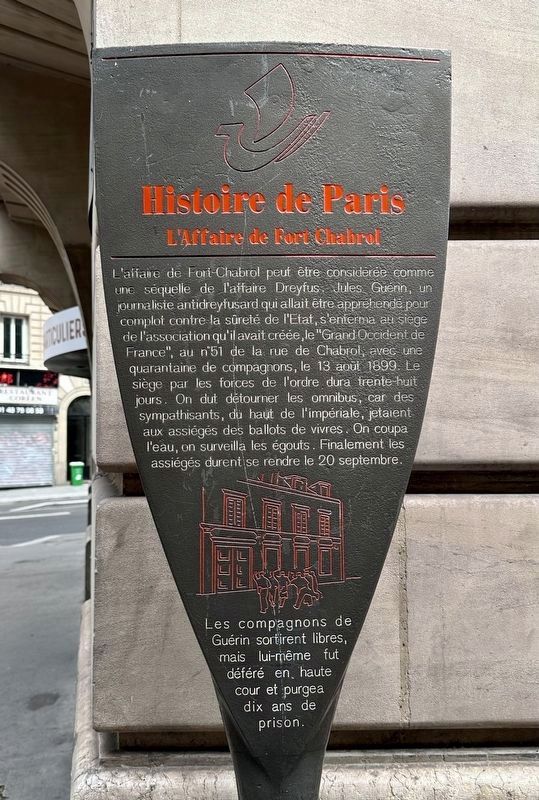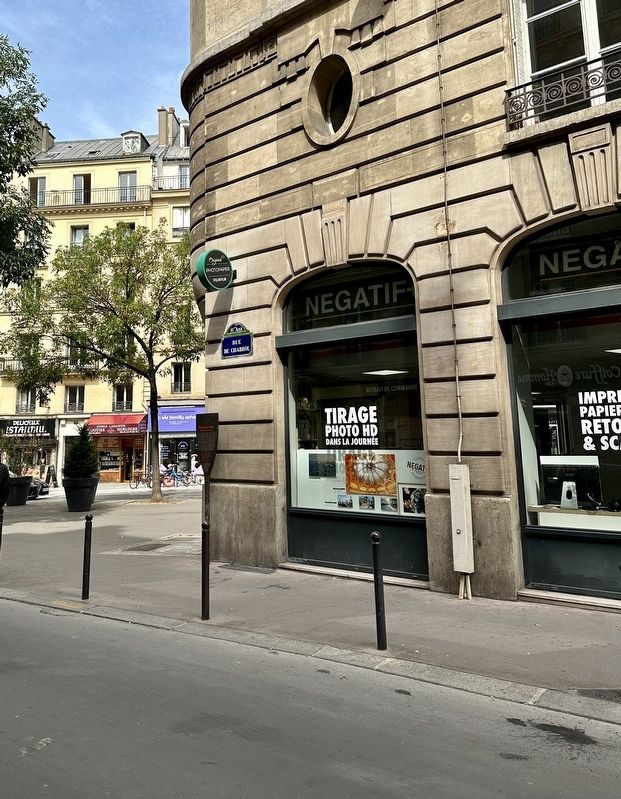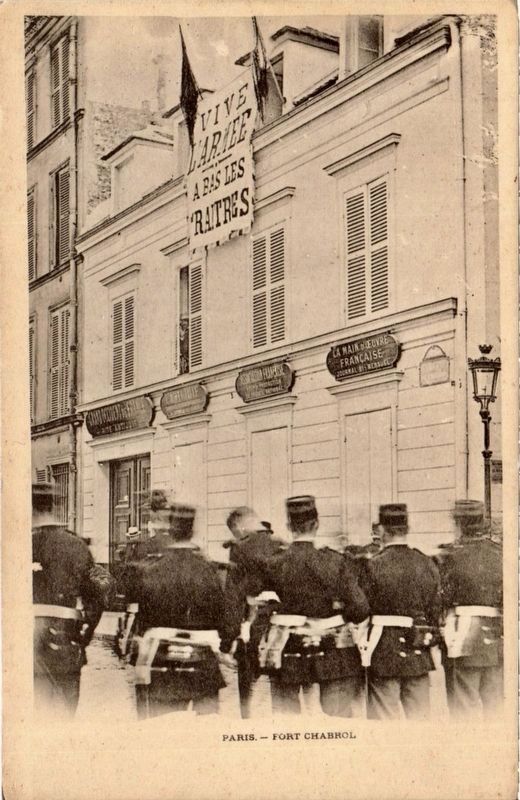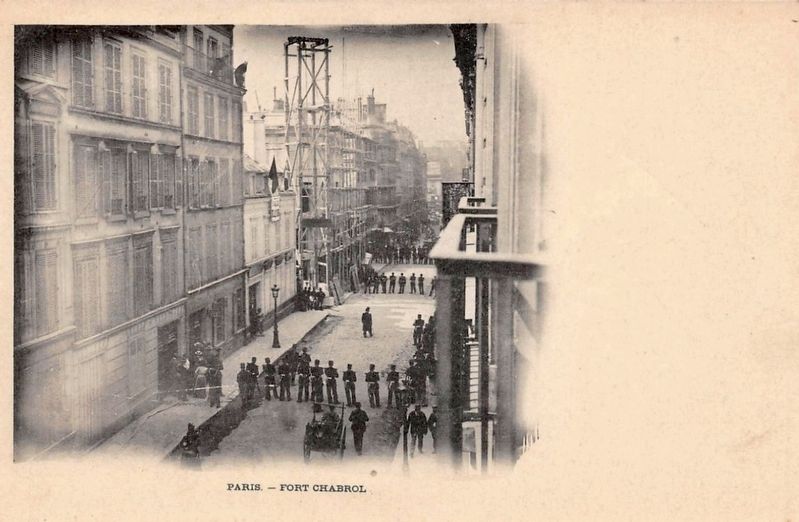Saint Vincent de Paul in Paris in Département de Paris, Île-de-France, France — Western Europe
L’Affaire de Fort Chabrol
— Histoire de Paris —
The Fort-Chabrol affair can be considered as a sequel to the Dreyfus affair. Jules Guérin, an anti-Dreyfusard journalist who was going to be arrested for plotting against state security, locked himself in the headquarters of the association he had created, the "Grand Occident de France", at no. 51 rue de Chabrol, with around forty companions, on August 13, 1899. The siege by the police lasted thirty-eight days. Transportation had to be diverted because sympathizers were throwing bales of food to the besieged from the top of a neighboring building. The water was cut off, the sewers were monitored. Finally the besieged had to surrender on September 20. Guérin's companions went free, but he himself was brought before the high court and served ten years in prison.
Topics and series. This historical marker is listed in this topic list: Notable Events. In addition, it is included in the Histoire de Paris series list. A significant historical date for this entry is September 20, 1899.
Location. 48° 52.639′ N, 2° 21.013′ E. Marker is in Paris, Île-de-France, in Département de Paris. It is in Saint Vincent de Paul. Marker is at the intersection of Rue de Chabrol and Rue La Fayette, on the right when traveling west on Rue de Chabrol. Touch for map. Marker is at or near this postal address: 100 Rue La Fayette, Paris, Île-de-France 75010, France. Touch for directions.
Other nearby markers. At least 8 other markers are within walking distance of this marker. Caserne de la Nouvelle-France / Nouvelle France Barracks (about 90 meters away, measured in a direct line); Square Aristade Caviaillé-Coll (about 150 meters away); Église Saint-Vincent-de-Paul (about 150 meters away); École Élémentaire Publique Chabrol Jewish Children Deportation Memorial (about 210 meters away); Camille Corot (approx. 0.3 kilometers away); Hôtel de Botterel-Quintin d’Aumont (approx. 0.4 kilometers away); Maurice Feferman (approx. 0.4 kilometers away); Max Aub (approx. 0.4 kilometers away). Touch for a list and map of all markers in Paris.
Also see . . . Fort Chabrol (Wikipedia, in French).
Excerpts (in translation): Fort Chabrol designates the incredible episode which took place from August 12 to September 20, 1899, when Jules Guérin, refusing to comply with the arrest warrant issued against him, took refuge for 38 days in a building on rue de Chabrol in Paris, while the … government … feared a nationalist and monarchist riot on the occasion of the review trial of Alfred Dreyfus in Rennes.(Submitted on October 16, 2023.)
On August 12, 1899, the authorities arrested Paul Déroulède and the leaders of the League of Patriots, as well as the leaders of the Royalist Youth and the Anti-Semitic League of France. Refusing to comply with the arrest warrant issued against him, Jules Guérin, president of the Anti-Semitic League and director of the weekly newspaper L'Antijuif, took refuge at the "Grand Occident de France", no. 51, rue de Chabrol.
The building,put under siege, was supplied in the days preceding its surrender from rented accommodation at no. 114 rue Lafayette. Thrown from roofs, the packages did not all reach their goal: some fell into the street. After thirty-eight days of resistance, the insurgents surrendered on September 20, 1899.
Following this event, the expression "un fort Chabrol" came into use in several French-speaking countries, to designate a situation where an individual - generally armed, sometimes with hostages - takes refuge in a building surrounded by forces. of order.
Credits. This page was last revised on October 16, 2023. It was originally submitted on October 16, 2023, by Andrew Ruppenstein of Lamorinda, California. This page has been viewed 54 times since then and 21 times this year. Photos: 1, 2, 3, 4. submitted on October 16, 2023, by Andrew Ruppenstein of Lamorinda, California.



